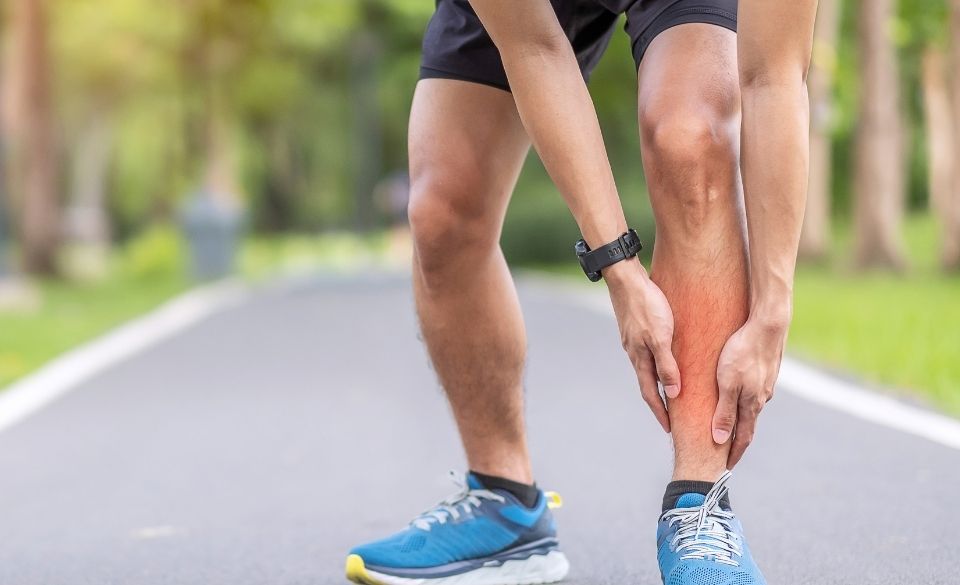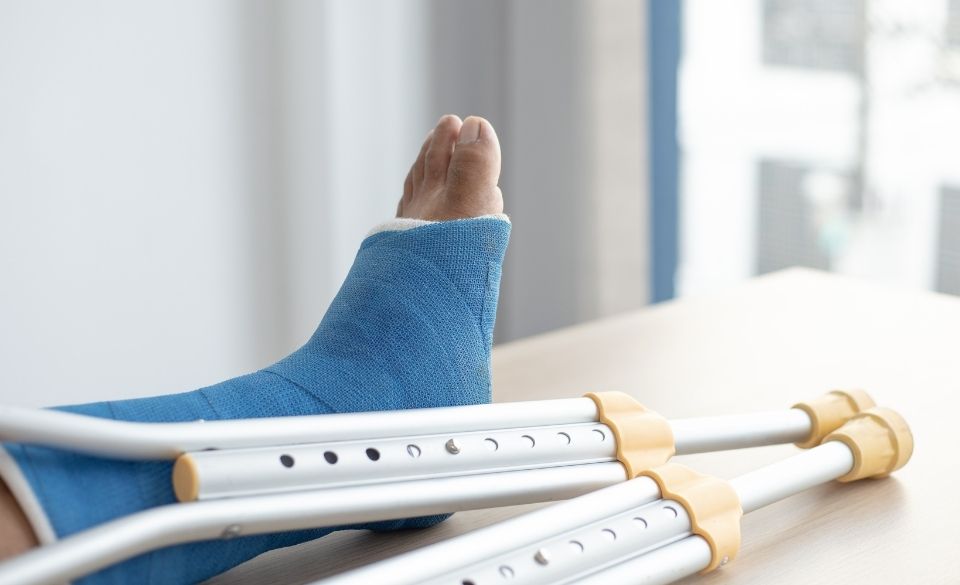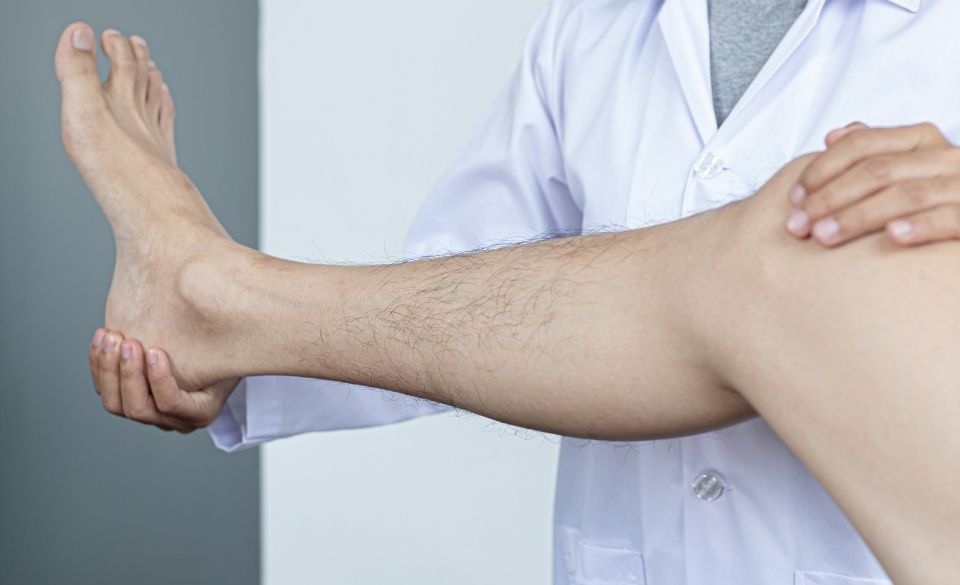
Shin pain After Running? How to Prevent Shin Splints From Happening
Page Contents
If you are currently experiencing shin pain after running don’t be alarmed. More than 80% of runners experience pain in their shins.
The pain you are experiencing is called shin splints and is located next to your shin bone. The pain you may experience can be intense and often prevent the runner from training.
Fortunately, this article is dedicated to learning about shin splints and other shin pain caused by running. So, in this article you are going to learn a lit bit more about:
– Shin pain after running
– Pain in the shins while running
– Causes of lower leg pain
– Injury recovery time
– Anterior shin pain
– Posterior shin pain
– Shin Splints
Shin pain After Running – What Can it Be?
The shin pain you experience after running is called shin splints, or to be more precise, medial tibial stress syndrome.
Medial tibial stress syndrome or the shin pain you feel after running and is located next to the tibia. If ignored, it can often lead to a stress fracture. Thus, putting you out of training for at least six weeks. So it is important if you experience shin pain after running that you treat and diagnose the issue straight away.
However, shin splints aren’t always the culprit for the pain you feel. If your shins hurt from running, there can be an underlying cause, which could be caused by:
– Tight calves
– Tight Quadriceps
– Incorrect Footwear
– Poor Running technique
– Overstriding
– Heel striking
– Change of footwear
Most people that experience sore shins after running have tight calf muscles and quadriceps. Because of this, the legs don’t absorb the impact as they should. Thus, increasing the stress on the muscle next to the shin bone.
However, you may be stretching regularly and using a foam roller. In this case, the shin pain may be caused by incorrect footwear rather than tight muscles.
That means you may need a shoe with more support or increased cushioning. Either way, it is vital to rest the legs before trailing different shoes.
Last but not least is the running technique. Runners that heel strike are more likely to develop pain in their shins than a neutral or midfoot runner. This is because the impact greatly increases over that of a midfoot striker and they generally spend more time connecting with the ground than a forefoot or midfoot runner.
If you are one of these people that heel strikes constantly, try moving to a more cushioned shoe, or better yet, try changing your running technique slightly. Doing so will help reduce some of the stress placed on the shins.
What Causes Shin Pain After Running?
Runners of all levels can get shin splints or deal with shin pain after running. However, it is usually more prevalent in newer runners. This is because they typically start out too quickly and their shins become sore as a consequence of that.
Women are also more likely to get shin splints or pain in their shins than males.
Most physiotherapists and sports doctors agree that shin splints are caused by the movement of the shin bone. When your foot hits the ground the shin bone bends slightly and muscles around it get inflamed and damaged. Generally, this happens more with newer runners than experienced ones.
The experienced runner’s body responds by strengthening the tibia. While the newer runner’s bones haven’t had time to strengthen yet. This typically forces beginner runners to rest for a period of time so the bone can heal and strengthen.
Anterior shin splints Pain – What is it?
If you are experiencing pain in the shins along the anterior tibial muscle, you most likely have Anterior shin splints. Pain in the anterior tibial muscle and tendon is caused by repetitive action. This then causes the anterior tibial muscle and tendon to get inflamed.
If you have symptoms of Anterior shin splints be careful. You are more likely to develop a stress fracture or compartment syndrome than if you are experiencing posterior shin splints.
How Long Do Anterior Shin Splints Last?
Posterior shin splints can last anywhere from 2-6 months to fully heal.
How Do you Treat Anterior Shin Splints?
Rest your legs. They need time to heal.
Ice your shin 2-3 times daily between 10-20 minutes.
Use insoles or orthotics to help correct your running gait.
Take anti-inflammatory painkillers or other pain relief.
Strap the shins to reduce contact.
Posterior Shin Splints – How it Differs
Posterior shin splints are different from Anterior, as it occurs along the inside and back of the lower leg and affects the tibialis posterior.
Because this muscle helps support the arch of your foot (medial arch muscle), the pain is usually caused by inflammation and swelling of the tibialis posterior.
Common causes of posterior shin splints are flat feet, increased mileage, or rapid increase of intensity. Studies found that the longer and harder you run, the more the body must absorb through each stride. So it’s no surprise shin splints are usually caused by too much running or increased intensity.
How Long Do Posterior Shin Splints Last?
Posterior shin splints can last anywhere from 2-6 months to fully heal.
How Do you Treat Anterior Shin Splints?
Just like other forms of shin pain, it is important to rest fully and reduce swelling.
– Massage
– The icing of your shins and lower leg 2-3 times per day.
– Anti-inflammatory gel or painkillers to relieve pain.
– Custom innersoles or orthotics.
– Strapping of shin and surrounding muscles.
– Complete rest from running.

Shin Splints Recovery Time – What You Should know?
The pain in the shin you experience with shin splits usually goes away once the legs have fully healed. This process can take anywhere from a few weeks to a few months. This largely depends on the severity of the injury.
Most people can resume training within 2-3 weeks. However, if your shin splits have developed into a stress fracture, you may need 2 months or more to heal fully before you can run again.
Regularly icing and massage can help speed up the recovery time, and in a best-case scenario, allow you to keep running. But generally, this only works if the pain is minimal.

How Do You Heal Shin Splints Fast?
– The RICE method is one of the quickest ways to heal shin splints.
– Rest from all activities that provide any stress to the lower legs. This includes running, tennis, walking, and basketball.
– Place ice packs or ice cubes on your shins for 10-15 minutes, 2-3 times daily.
– Wear a compression sleeve or use sports tape to help reduce inflammation around your shins.
– Elevate your leg regularly to reduce blood flow to the painful area.
Do Shin Splints Hurt to Touch? Symptoms of Shin Pain
Generally with time the more you run on shin splints the more the pain will increase. That means if you continue to run with shin pain after a while your shins will hurt to touch. This is often felt first thing in the morning and the first few kilometres of a run.
If the pain becomes too intense and you cannot place weight on the lower legs anymore, you may have developed a stress fracture. If this is the case, speak to your doctor and they will do an MRI to diagnose the injury.
Other symptoms of shin pain are:
– Redness across the shin
– Tenderness
– Soreness or pain along the inner side of the shin bone.
– Mild swelling
No matter what type of shin pain you are experiencing, all require rest. Doing so will greatly reduce the chances of a stress fracture or months off running. Ice regularly, stretch the calf muscle and keep off your feet. That is the quickest way to get out running after having shin splints.



